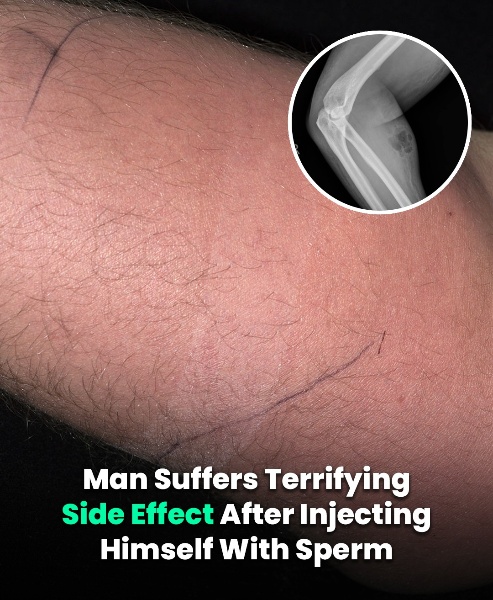Man Suffers Terrifying Side Effects Afte
A 33-year-old Irish man shocked doctors when he arrived at a Dublin hospital in 2019 complaining of severe back pain – and revealed he’d been treating it by injecting his own s***n for 18 months. The unconventional “therapy” led to serious complications, marking the first documented case of human s***n injection.
Initially claiming his pain resulted from lifting heavy objects, medical staff grew suspicious when they noticed his swollen, red right arm. Under questioning, the patient admitted he’d been administering monthly s***n injections using needles purchased online. His condition worsened after he injected three doses in one session shortly before hospitalization.
X-rays revealed alarming findings: subcutaneous emphysema (air trapped under skin) and s***n accumulation in his arm’s soft tissue. The Irish Medical Journal (IMJ) report noted this required immediate antibiotic treatment. While the man discharged himself before complete treatment, his case raised serious medical concerns.
Dr. Lisa Dunne, the report’s lead author, emphasized this unprecedented situation. Though animal studies had explored similar procedures, no human cases existed in medical literature or even on obscure internet forums. The IMJ confirmed this as the first recorded instance of intravenous s***n injection in humans.
Medical experts issued strong warnings about the dangers of self-administered treatments. The report highlighted risks including vascular damage, soft tissue injury, and infection from improper needle use by untrained individuals.
The case also underscored the hazards of experimenting with unproven therapies lacking scientific validation. Doctors cautioned against adopting alternative treatments without clinical evidence or professional supervision.
This bizarre incident serves as a stark reminder of the potential consequences when individuals pursue dangerous, untested medical solutions. The medical community continues to emphasize the importance of evidence-based treatments and professional healthcare guidance.






